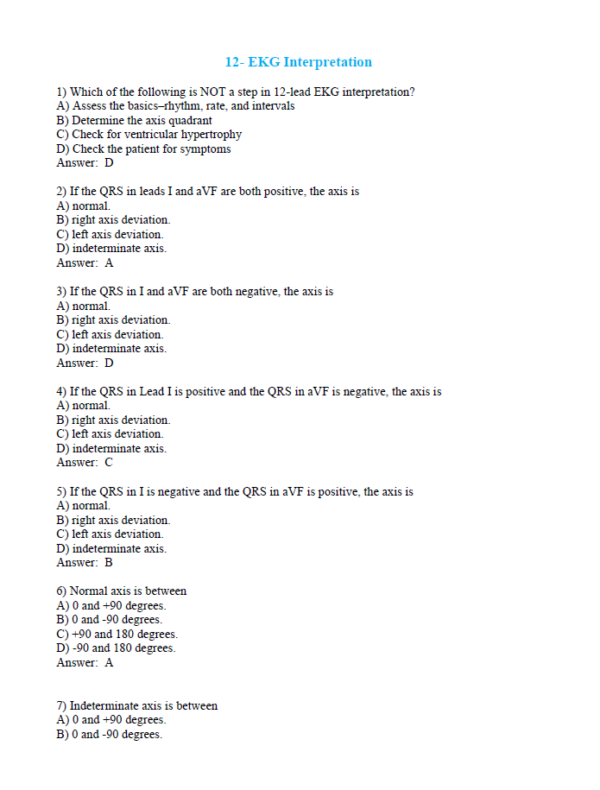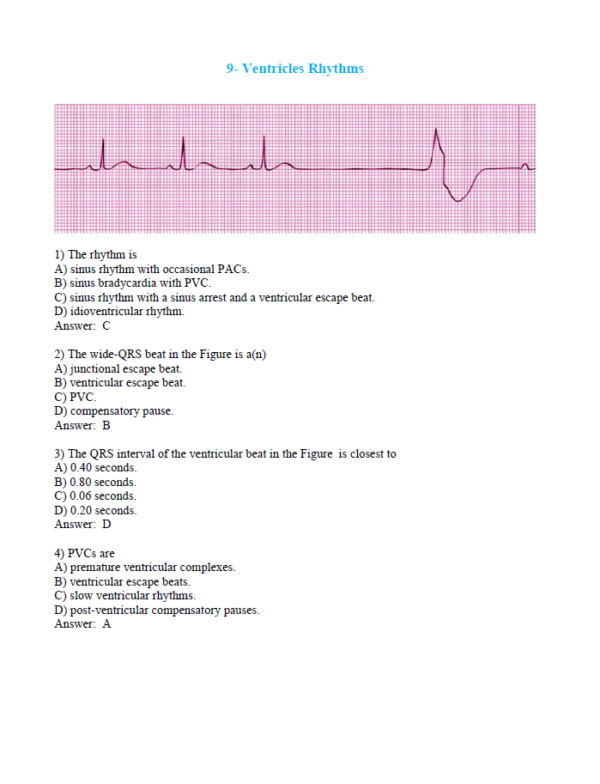“Parenteral Medication Dosage Calculation: Practice Exam Questions and Answers” has been added to your cart. View cart
ABG Interpretation Worksheet: Practice Scenarios for Mastering Acid-Base Imbalances
This worksheet provides a series of practice problems to help healthcare professionals interpret arterial blood gas (ABG) results. Each scenario presents different ABG values, requiring users to identify whether the patient is experiencing acidosis or alkalosis, and whether the cause is respiratory or metabolic. It also includes detailed answer explanations to reinforce learning. Ideal for nursing students, this worksheet is a valuable tool for mastering ABG interpretation and understanding the clinical implications of acid-base imbalances.
Preview document (- of - pages)
$2.50
- 100% Guaranteed Satisfaction
- Documents can be downloaded immediately
- No hidden fees
Specifications
School:
-
Course:
-
Subject:
-
Year of study:
-
Document
Section:
-
Made on:
October 5, 2024
Type:
.pdf
Pages:
-
Language:
English
Seller

You may also find these Examinations helpful
-
Ventricular Rhythms: EKG Interpretation and Critical Care Exam Questions
Exams by Exams on 09-10-2024A comprehensive set of exam questions covering ventricular rhythms, including PVCs, ventricular tachycardia, ventricular fibrillation, idioventricular rhythm, and torsades de pointes. Topics include identification of wide QRS complexes, rhythm interpretation,... -
AV Junction Rhythms: EKG Interpretation and Exam Questions
Exams by Exams on 09-10-2024A set of exam questions focused on AV junction rhythms, including junctional rhythm, junctional bradycardia, accelerated junctional rhythm, and junctional tachycardia. Topics cover identifying P wave positioning, retrograde conduction, heart... -
Rule of Nines and Parkland Formula: Burn Assessment and Fluid Resuscitation
Exams by NurseEducator on 07-10-2024This document provides a practical guide to calculating total body surface area (TBSA) burned using the Rule of Nines, along with fluid resuscitation calculations using the Parkland formula. It includes...



 7 Pages
7 Pages


